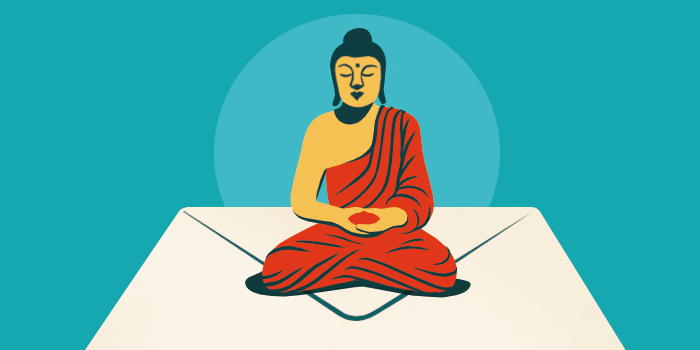The First Precept: Abstain from killing
The first of the five precepts—Buddhist guidelines for an ethical life—is to refrain from taking life, often phrased as a vow not to kill living creatures. What qualifies as a living creature varies among Buddhist schools, but humans and all other animals are included. Looser interpretations also count microorganisms and plants among living creatures. (Some Southeast Asian Buddhists, for instance, abstain from cutting down trees.) Violations of the first precept carry severe karmic consequences.
The first precept takes into account intent and motivation as well as actions, not unlike the Western legal system. Theravada Buddhism lists five factors that contribute to a violation of the first precept, including the desire to kill and whether or not the victim dies. So it is possible to violate the first precept without killing anything, while killing in self-defense or by accident is considered a lesser breach than premeditated murder. Because the precept allows for factors beyond the act of killing itself, the first precept can be extrapolated to mean a commitment not to support killing in any way, including praising or encouraging the act in thought or speech.
From a Mahayana perspective, it is possible to kill without violating the first precept if the killing is of widespread benefit and the killer is motivated solely by compassion. A famous example of this utilitarian view in traditional texts is a story about the Buddha’s former life as a ship captain, found in the Upayakausalya, or Skill in Means sutra, in which he killed a murderous stowaway on his ship to save his five hundred-person crew from being murdered or from blindly killing one another in an attempt to stop the stowaway. Though rare circumstances like this may not be considered violations of the precept, they still create karmic consequences. In modern times, there are the well-known cases of Vietnamese and, more recently, Tibetan Buddhist monks self-immolating to bring attention to their causes. Generally, however, Buddhist teachers err on the side of caution in endorsing anything that ends life, since the stakes are so high and pure motivation is deemed virtually impossible.
Daily life choices as well as hot-button topics are not explicitly covered in the Buddhist teachings about ethics. Thus, there are no hard-and-fast rules connected to the first precept vis-à-vis vegetarianism, pest control, abortion, euthanasia, or capital punishment. Buddhists acknowledge that it is impossible to live without killing in some way, especially if the precept is understood broadly. Thus Buddhist teachers typically advise practitioners to assess how their life habits cause harm and then make choices that reduce harm as much as possible. The Vietnamese Zen teacher Thich Nhat Hanh’s community, for instance, engages with the first precept as a training exercise “to protect life [and] to decrease violence in oneself, in the family, and in society.”

Tricycle is more than a magazine
Gain access to the best in sprititual film, our growing collection of e-books, and monthly talks, plus our 25-year archive
Subscribe now